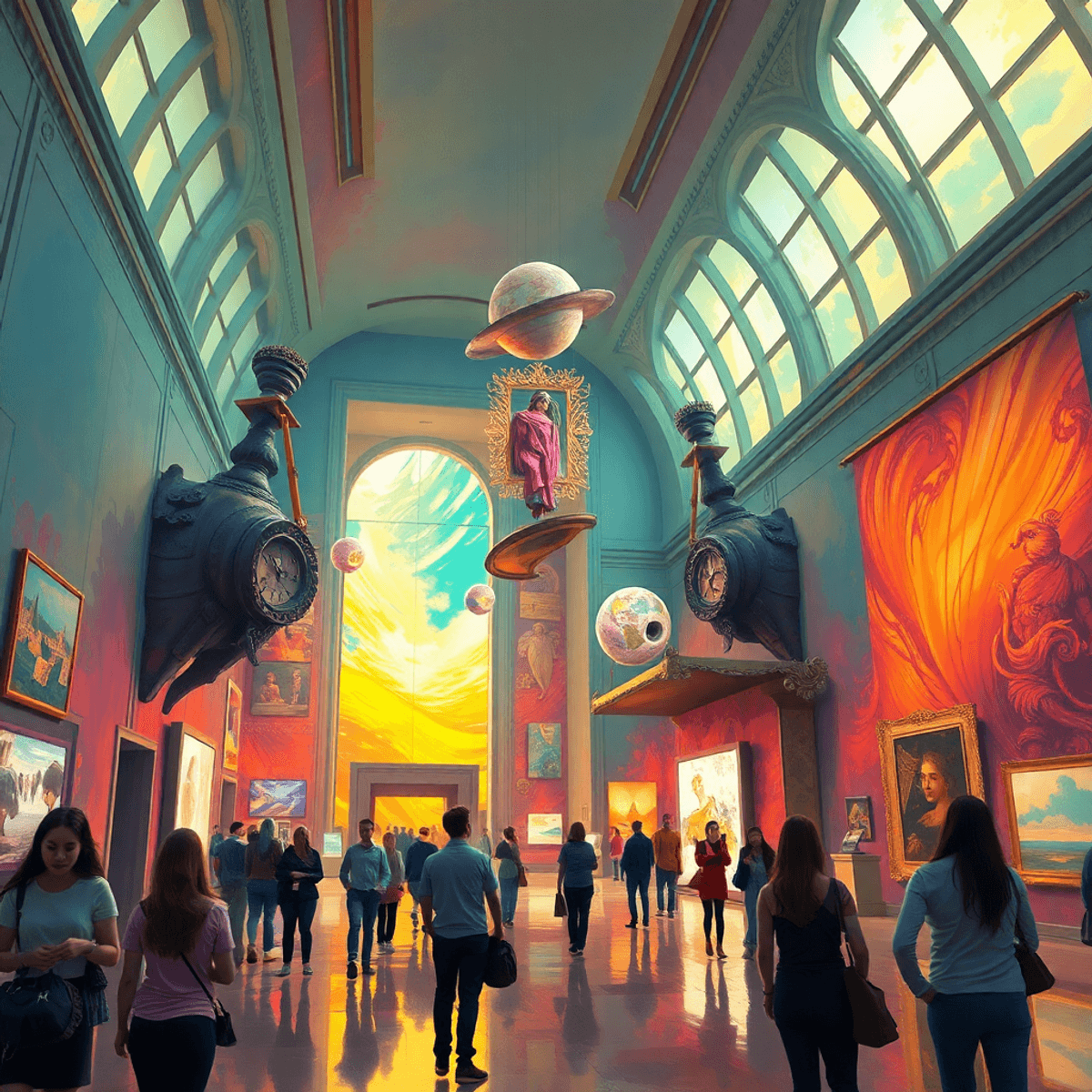
Art museums are embracing new technology. The Museums in the Metaverse, an XR platform developed by University of Glasgow researchers, aims to transport these cultural spaces into virtual reality. This means we can explore art pieces without being limited by physical space.
VR arcades could become the new homes for art museums.
The cultural heritage sector is on the verge of a major change. Will VR arcades redefine how we experience art? The possibilities are vast and exciting.
Virtual museums are changing the way we experience art and history. They use technology to create immersive experiences that physical museums may find hard to replicate.
A virtual museum is an online platform showcasing digitised artefacts, allowing users to explore collections without geographical constraints. This innovation democratizes access to cultural heritage, enabling anyone with an internet connection to experience art and history.
Digitisation opens doors for:
3D digital models elevate engagement by offering interactive elements. Users can:
The integration of these technologies creates a richer understanding of cultural treasures. As more institutions embrace this shift, the potential for innovative storytelling grows, inviting visitors into a new realm of discovery.
Technology reshapes museum experiences. At the forefront is XR technology—a fusion of virtual reality (VR), augmented reality (AR), and mixed reality (MR). This blend creates immersive environments that transport visitors into the heart of history.
Photogrammetry plays a crucial role in this transformation. This technique captures multiple photographic angles of an object to create detailed 3D models.
One standout piece of hardware driving this evolution is the Meta Quest 3.
With these technologies, museums can establish a deeper connection with their audience. Visitors engage dynamically with art, exploring its intricacies and historical context in ways previously deemed impossible. The future is here, and it’s immersive.
The Lewis chess pieces are more than just artifacts; they are a testament to Scotland’s rich historical narrative. Discovered in 1831 on the Isle of Lewis, these medieval carvings crafted from walrus tusk ivory hold substantial cultural significance. Each piece tells a story, connecting us to a time when chess was not merely a game but a reflection of societal hierarchies and strategic thinking.
Housed at the National Museum of Scotland, these exquisite artifacts stand as highlights within the collection. Visitors can admire their intricate designs, yet traditional museum experiences limit interaction. Enter Museums in the Metaverse, an XR platform developed by University of Glasgow researchers, which offers a fresh perspective on how we engage with art and history.
Through this innovative platform, users can step into a virtual realm where the Lewis chess pieces come alive. VR technology allows for:
This immersive approach not only democratizes access to cultural heritage but also transforms how we connect with our past. The potential for VR arcades to host such experiences marks a pivotal shift in the future of art museums.
Edify plays a crucial role as a technical partner in developing XR platforms. This partnership is vital for creating immersive experiences that connect traditional museums with virtual spaces.
One standout feature of Edify’s platform is the creator mode. This functionality allows users to craft their narratives around artefacts, transforming passive viewers into active participants. Each user can:
This level of customization not only enhances engagement but also fosters a deeper connection to cultural heritage.
The platform offers various virtual environments for curation, enabling institutions to showcase artefacts in meaningful contexts. Users can navigate through:
These environments cater to different learning styles, ensuring that every visitor finds value in their experience.
Edify’s approach addresses significant challenges in the museum sector, such as accessibility and engagement. By democratizing content creation and presenting culture in innovative ways, this XR platform opens doors for collaboration between technology and museums. The potential for a richer dialogue between visitors and artefacts is immense, setting the stage for a revolution in how we interact with history and art.
The world of art museums is changing. VR arcades could becoming new and exciting cultural spaces. These places offer immersive experiences that traditional museums find hard to compete with. Using advanced technology, they can present art in ways that truly engage viewers.
Collaboration between tech companies and museums holds tremendous potential. By partnering, they can create unique exhibitions that blend artistry with state-of-the-art technology. A recent example is the Nevada Museum of Art’s VR exhibit of Seven Magic Mountains, which showcases the possibilities of such collaborations.
Additionally, the concept of museum metaverses promises to redefine cultural experiences by merging the physical and digital realms in unprecedented ways.
As VR arcades continue to evolve into what could be termed as a downloadable theme park, they may redefine what it means to experience culture, opening doors for future explorations in location-based VR.
Making cultural heritage accessible to everyone is extremely important. Technology has the ability to overcome obstacles, providing a platform for all to enjoy art and history.
These creative methods use technology to encourage participation and enable users to discover intricate stories connected to their cultural backgrounds. By rethinking how we engage with art, VR becomes a means of inclusion instead of exclusion, igniting stronger bonds within communities.
The future of museums lies in the integration of VR technology. This shift promises to reshape visitor experiences and engage broader audiences.
Key aspects include:
As an XR platform being developed by University of Glasgow researchers gains momentum, hopes are high for art museums to find their new homes in VR arcades. Cultural spaces are evolving, and the impact on the cultural heritage sector could be profound.


